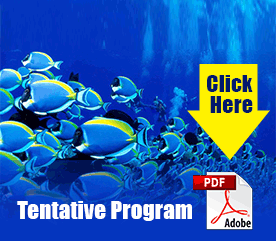
Darius Ceburnis
National University of Ireland Galway, Ireland
Title: Organic matter cycling in marine environment: Primary versus secondary sources and cloud interactions
Biography
Biography: Darius Ceburnis
Abstract
The marine aerosol produces haze and cloud layers overlying an immense ocean covering >70% of the Earth’s surface. Small changes even in low-albedo layers superimposing this relatively dark surface can have profound effects on the global radiation budget and climate change. Bursting bubbles at the ocean-surface produce airborne salt-water spray-droplets, in turn, forming climate-cooling marine haze and cloud layers. The reflectance and ultimate cooling effect of these layers can be determined, but the sprays water-uptake properties are modified through entrainment of ocean-surface organic matter into the airborne droplets. Particulate carbonaceous matter (PCM) is a significant contributor to ambient particulate matter originating from intervening sources which contribution is difficult to quantify due to source diversity, chemical complexity of PCM and processes during atmospheric transport. Carbon isotope analysis of stable and radioactive carbon spun out several techniques for identifying the sources and elucidating processes along atmospheric transport due to the unique isotopic signatures. Three principal sources have been quantified in marine North Atlantic air masses using dual carbon isotope analysis. A hypothetical model conceived to describe the sea-to-air transfer of oceanic OM was capable of reproducing stable carbon measurements at Amsterdam Island in the Southern Indian Ocean and subsequently linked ocean biological processes to the primary marine aerosol. The hypothetical model suggested that fresh organic matter readily resulted in organic matter enrichment in sea spray particles and likely contained fresh colloidal and nanogel particulate matter. Our experimental evidence suggested that virus attack on plankton blooms, triggering their demise, releases the organic matter and this organic matter, through aggregation processes, leads to enrichment in sea spray, thus demonstrating an important coupling between virus-driven plankton dynamics, marine productivity and sea spray modification with potentially significant climate impacts.

